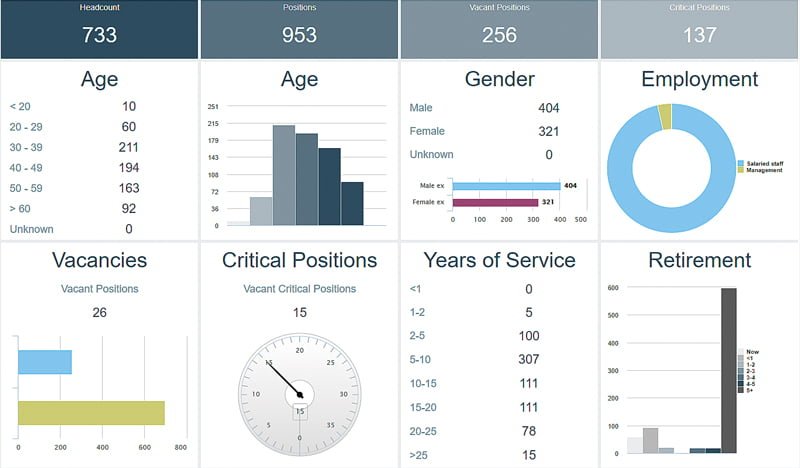

SAP Endorsed App for Data-Driven Human Capital Management
Data, facts and key figures from human resources management are plentiful in the course of advancing digitization. Correctly linked with the goals and objectives of the company, they can become a sound basis for good business decisions. People analytics is the keyword, meaning the analysis of personal data in the context of HR and organizational management: an exciting approach that can be used in many different scenarios and in all sub-areas of HR. The potential of data-driven human capital management is enormous - but can only be fully exploited with the appropriate tools. Solutions such as the SAP Endorsed App Ingentis org.manager for SAP SuccessFactors help companies turn their HR data into valuable information and draw conclusions for future-oriented strategy.
There are countless questions that can be examined in the course of the analyses. There is no such thing as a model approach; after all, the procedure is highly dependent on the defined business objectives, the corporate strategy and the individual circumstances. Nevertheless, the analysis of HR data is a discipline that creates added value in every company. After all, looking at the current state and the past helps above all to recognize patterns and subsequently to initiate appropriate measures at an early stage. Decisions are then no longer based on theoretical assumptions, vague presumptions or subjective feelings. Instead, comprehensible statements can be made on the basis of the information obtained, forecasts can be made and corresponding decisions can be objectively supported.
Critical tendencies in the personnel area - think, for example, of the "Great Resignation" that now also seems to have arrived in Germany - are identified as quickly as possible in this way, which in turn allows countermeasures to be taken in good time. The same applies to other crises in the company or to positive developments that should be further promoted.
People analytics thus ensures significantly increased transparency, from which not only the HR managers but also the managers of other departments and the management benefit. Last but not least, data-driven human capital management can also be expected to improve the employee experience, for example, by making it more visible whether talents are actually deployed in the appropriate position, where there is a need for further training, whether parts of the workforce are suffering from overwork or underperformance, or which employee retention programs would make sense.
Ingentis is considered a provider for the automated visual preparation of facts and figures from the HR area and from organizations. The software solution, which has been on the market in its original form as a pure organizational chart solution since 2001, can now do much more than simply depict departments and hierarchies. The premium-certified extension for SuccessFactors allows an individual representation of organizational structures and HR data in terms of design, layout and content, thus laying the technological foundations for people analytics and Big Data visualizations.
Dashboard for SuccessFactors
The display of the content and the way it is presented can vary depending on the user group. For example, the HR team has full access to the detailed organizational charts with all relevant information, while the employees themselves can only obtain an overview of the organizational structure, the business units and the responsible contact persons for data protection reasons. For the management level, a dashboard is provided at the same time, highlighting the key figures relevant to them and thus providing better insights in day-to-day business.

The cloud-based tool is seamlessly integrated with SAP SuccessFactors and can pull data directly from there. In addition, information from alternative data sources can also flow in. In this way, it becomes possible to include key figures from other areas of the company, such as the finance department, marketing or production, in the analysis. Because even if the effort involved in introducing people analytics and the associated allocation of time and human resources may initially seem quite high, data - "one of the most important raw materials of our time" - should not go unused. The added value lies in an overall view of the data and the possibility of downstream simulation of decisions.






